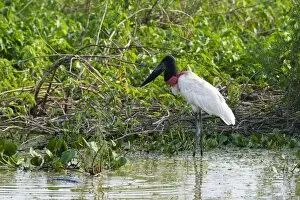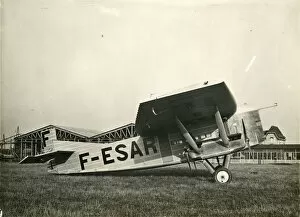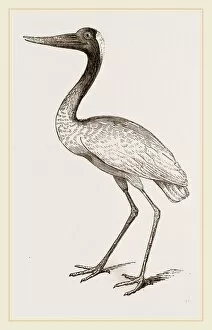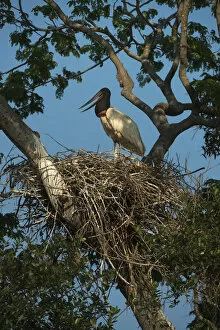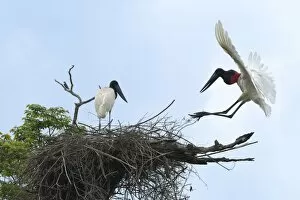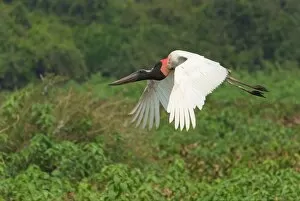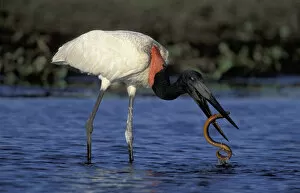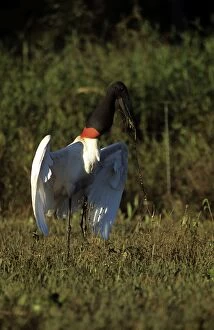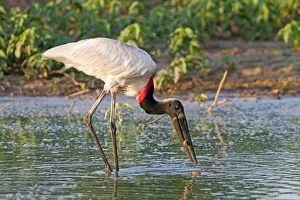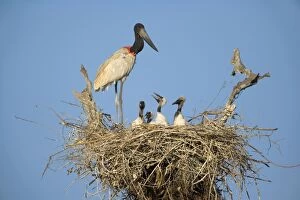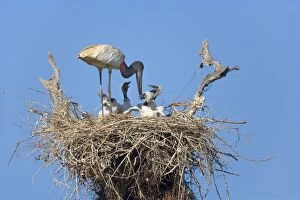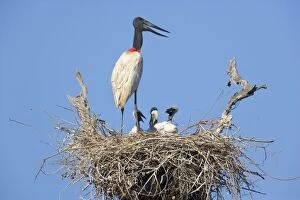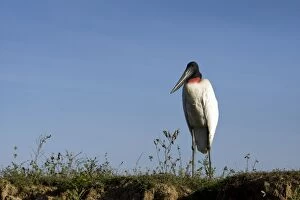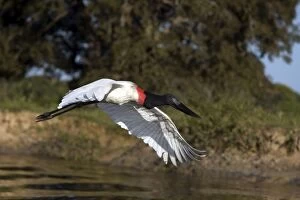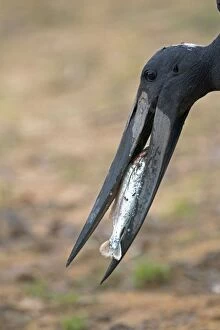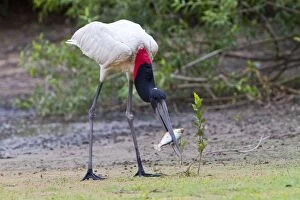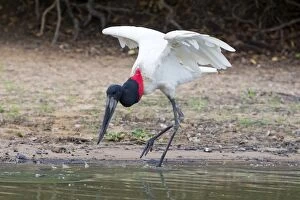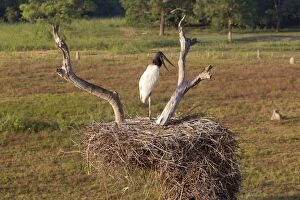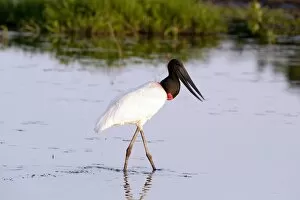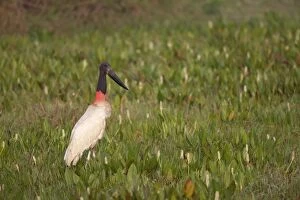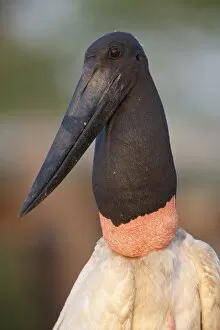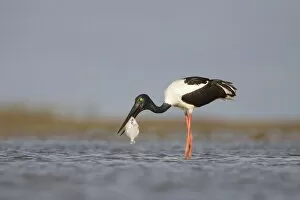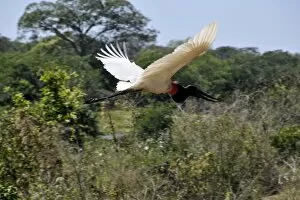Jabiru Collection (#2)
In the enchanting land of Brazil, where the sun kisses the earth at dawn and dusk, a majestic bird known as the jabiru graces the skies
For sale as Licensed Images
Choose your image, Select your licence and Download the media
In the enchanting land of Brazil, where the sun kisses the earth at dawn and dusk, a majestic bird known as the jabiru graces the skies. With its full-length wings spread wide, it soars effortlessly through the air, painting a picture of grace and elegance. The jabiru, scientifically named Jabiru mycteria, is a symbol of South America's natural beauty. Found along the banks of rivers in places like Mato Grosso do Sul and Pantanal, this magnificent creature captivates all who encounter it. Its striking black neck contrasts beautifully with its white plumage, making it an exquisite sight to behold. As evening approaches and darkness descends upon the land, these birds find solace perched on trees in Pantanal. Nesting peacefully amidst nature's embrace, they create a mesmerizing spectacle against the backdrop of twilight hues. One such moment unfolds at Bamurru Plains when a Black-necked Stork or Jabiru takes flight. The sheer power behind each beat of its wings leaves spectators awestruck as they witness this avian marvel soaring high above. The jabiru holds great significance in Brazilian culture; it represents resilience and adaptability. Just like this remarkable bird navigates different habitats effortlessly - from riverbanks to plains - Brazilians too embody strength in facing life's challenges head-on. With every flap of their wings echoing freedom itself, these birds remind us that there is beauty even in fleeting moments. They teach us to appreciate nature's wonders during both dawn and dusk when colors blend seamlessly into one another. So next time you find yourself exploring Brazil's breathtaking landscapes or gazing up at an open sky painted by sunset hues remember to keep an eye out for these incredible creatures –the jabirus– who continue to inspire awe wherever they go.

